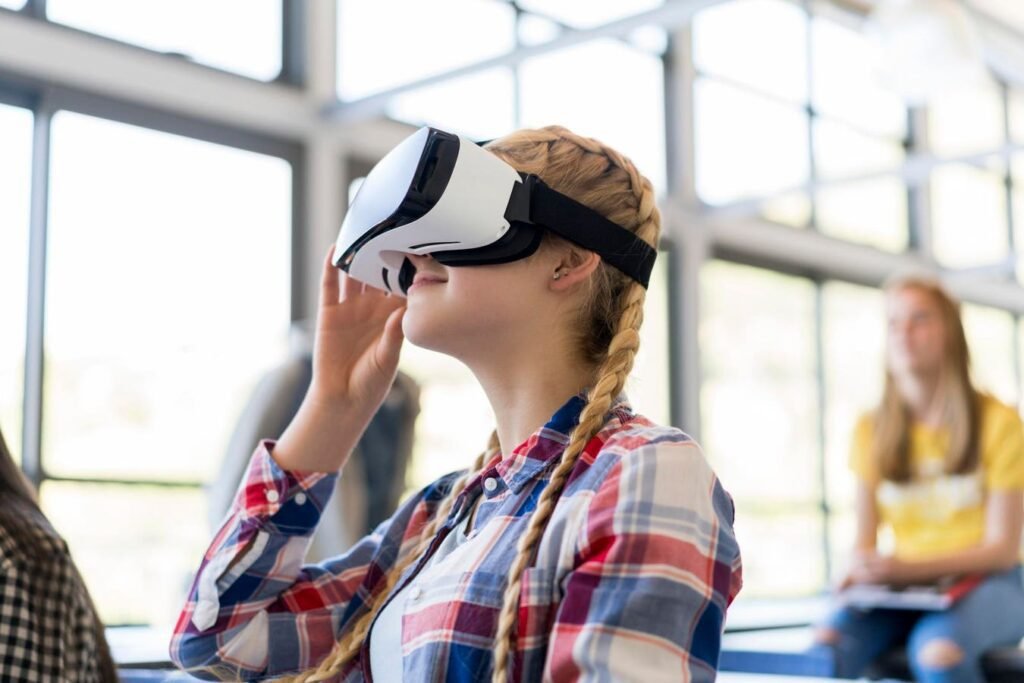Geoffrey Alphonso, its CEO Aleph Education.
In an era of rapid technological progress, it is necessary to redefine traditional educational methods. Today’s generations show increased awareness of environmental issues, convenience and fluency in the use of technology. According to Pew Research Center, 71% of millennials and 67% of Gen Z consider the climate a priority to ensure a sustainable planet for future generations. Additionally, 37% of Gen Z and 33% of millennials say climate change is their biggest personal concern.
Educators have recognized the importance of cultivating these environmentally aware minds and are using innovative methods such as incorporating digital and virtual field trips (VFT) into K-12 classrooms. Integrating technology into the curriculum can help promote a comprehensive learning experience that goes far beyond the boundaries of the traditional classroom and harnesses the transformative power of environmental education.
A study by experts in Stanford University found that environmental education programs provide significant benefits beyond teaching K-12 students about the environment. The experts, who analyzed 119 peer-reviewed studies from a two-decade period, found that students who participated in environmental education programs improved their academic performance, critical thinking skills and personal development. In addition, these programs fostered life skills such as self-confidence, autonomy and leadership, while increasing civic engagement and positive behaviors related to the environment.
While traditional field trips have long been a cornerstone of education, their scope and frequency must often be balanced with logistical challenges. Factors such as space limitations, financial issues and safety concerns often limit the possibilities of these traditional tours. According to a study titled “Virtual Field Trips in Earth and Environmental Science Education,” conducted by Ankara University in Turkey, the declining importance of traditional field trips is attributed to these same challenges, prompting the exploration of virtual alternatives.
The shift to virtual alternatives, enabled by VR technology, is also driven by the benefits of digital field trips, including cost efficiency, flexibility and increased safety. Reduced transport, ticket and logistical costs not only make field trips more affordable but also free up resources for schools to invest in other educational initiatives.
Additionally, the flexibility of digital field trips allows for personalized learning experiences. These experiences allow students to explore ecosystems, wildlife habitats and conservation efforts without leaving the classroom, overcoming the limitations associated with conventional field trips. Platforms such as Google Earth, National Geographic Explorer and virtual museum tours offer an integrated approach to learning about important environmental issues.
The Office of Educational Technology highlights in their 2017 National Education Technology Plan Update that in K-12 classrooms across the United States, National Science Foundation (NSF)-funded projects allow students to visit far-flung places like Machu Picchu, the Great Barrier Reef and more leaving the classroom. Thanks to tools like the Google Expedition Pioneer Program, educators can access programs that allow for virtual field trips. The Google Expedition Pioneer Program allows teachers to control virtual field trips from a tablet and guide students with Google Cardboard—a low-cost virtual reality solution consisting of cardboard, magnets, flashlights, and a user-supplied smartphone.
A study by the National Science Teachers Association (NSTA) highlighted the effectiveness of virtual field trips in promoting students’ understanding and retention of scientific concepts. These digital experiences transcend the boundaries of the traditional classroom and provide unparalleled access to diverse ecosystems and scientific phenomena.
However, to maximize the impact of virtual field trips, it is important to make clear connections to the curriculum. Aligning programs with learning outcomes ensures that distance education remains relevant and meaningful. Examples of successful implementation, such as Berkner STEM Exploration Center and Immersion Studiodemonstrate the potential of VR technology when it comes to providing students with immersive educational experiences.
During the 2020-2021 and 2021-2022 school years, the STEM Environmental Education Center offered virtual tours of approximately 45 minutes upon request. These trips allowed students to explore virtual prairies, forests, freshwater ecosystems, and more while targeting Texas Science Core Knowledge and Skills. The center combines science with social and emotional learning and emphasizes mental and physical well-being.
Despite the significant benefits of virtual tours, it is imperative to address potential concerns. Research has highlighted the lack of physical interaction and hands-on experience through virtual tours that traditional tours offer. However, well-designed virtual field trips with interactive elements can foster significant engagement and collaboration among students.
Another concern is the digital divide, as students need access to technology for virtual experiences. To address these concerns, schools and policymakers should prioritize initiatives that ensure equitable access to technology to close the gap and promote inclusion.
At the same time, it is the responsibility of technology companies to ensure the viability of virtual tour technology. To achieve widespread adoption, tech companies need to make these platforms accessible and affordable. This could mean offering affordable subscription models or one-off purchases for schools and investing in teacher training to integrate the experiences into their curricula. Technology companies must also strive to make improvements based on user feedback and devote significant resources to research and development to ensure that technology evolves to effectively meet educational needs.
Digital field trips have emerged as a new force in K-12 environmental education, offers many advantages in terms of cost-effectiveness, flexibility and accessibility. While it is paramount to address issues related to physical interaction and access, incorporating well-designed digital field trips into the curriculum can have enormous potential for educating environmentally conscious and globalized citizens of the future. In this way, I believe virtual tours can be a beacon of innovation, paving the way for a more sustainable and connected world.
Forbes Technology Council is an invitation-only community for world-class CIOs, CTOs and technology executives. Am I eligible?
